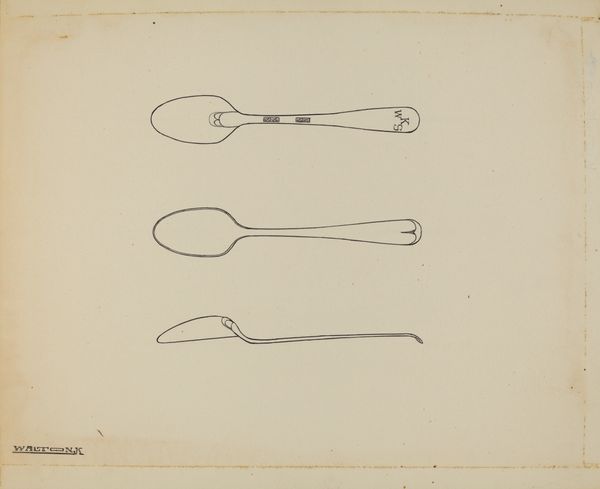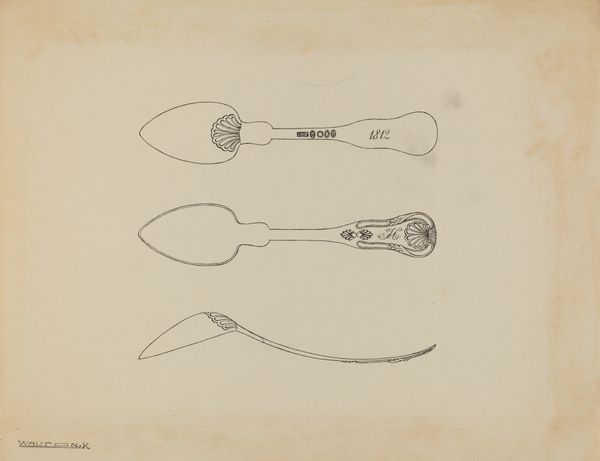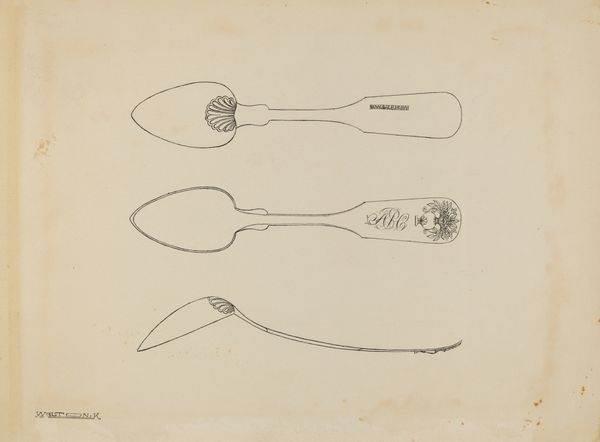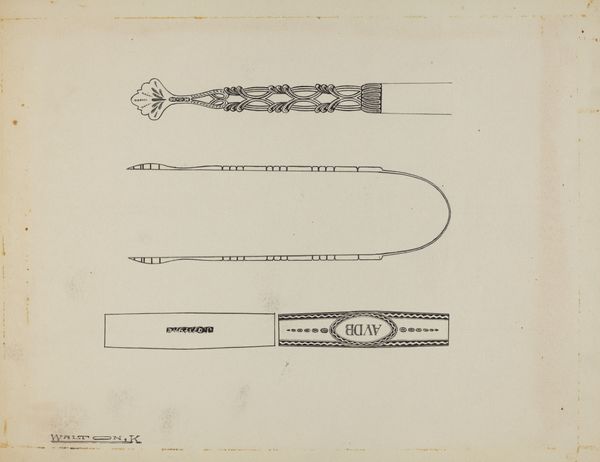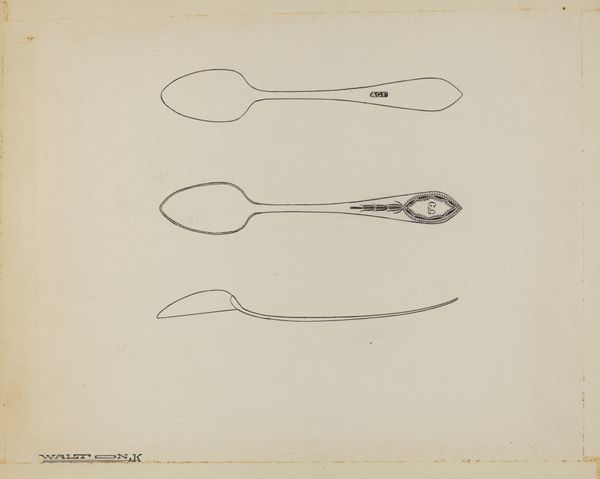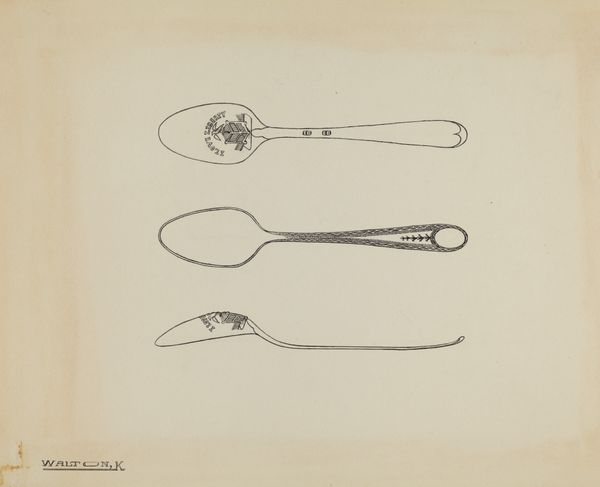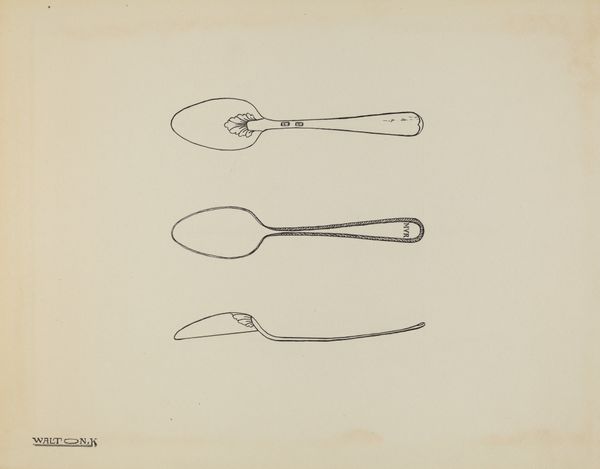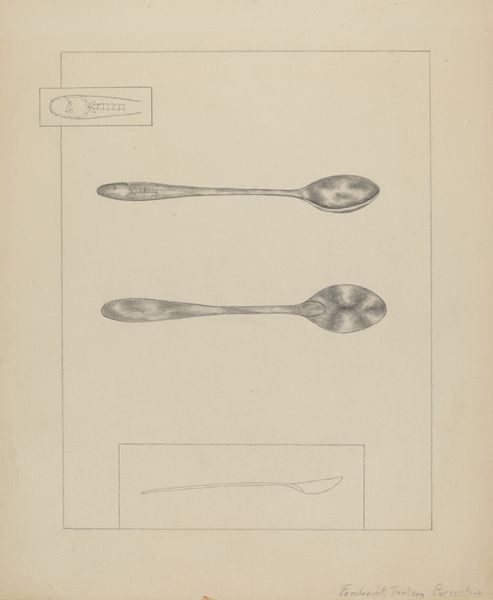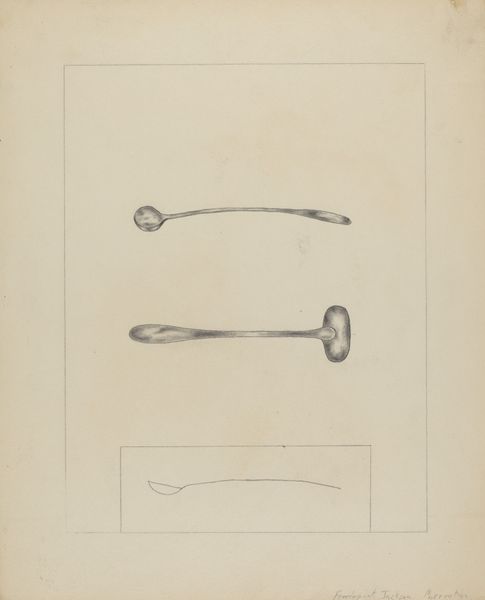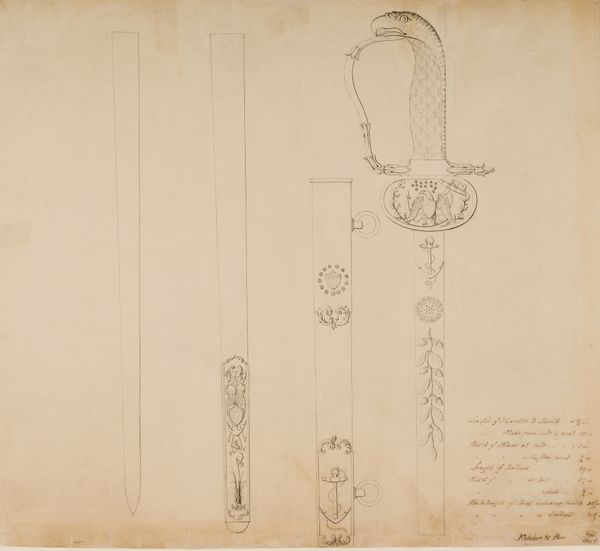
drawing, graphic-art, ink, pen
#
drawing
#
graphic-art
#
ink
#
ink colored
#
pen
#
modernism
Dimensions: overall: 22.7 x 28 cm (8 15/16 x 11 in.) Original IAD Object: 6 3/8" long
Copyright: National Gallery of Art: CC0 1.0
Editor: Here we have Kalamian Walton’s "Silver Funeral Spoon" from around 1938, created with pen and ink. It seems like a straightforward technical drawing at first glance, almost industrial. What's your take on this, especially considering the context in which it was made? Curator: Well, the title itself – "Silver Funeral Spoon" – points to a very specific cultural function and invites us to consider it within a history of memorial practices. While the Modernist style gives it a streamlined aesthetic, we can’t ignore the implications of ‘funeral’ as a starting point. How do you think that impacts our viewing? Editor: It definitely shifts the mood. I initially saw clean lines, but now I’m seeing ritual and perhaps a somber reflection on mortality and remembrance. Is this about challenging traditional representations, maybe? Curator: Precisely. Modernism aimed to break from past conventions, even in how death was memorialized. But it also raises questions about accessibility: who would have commissioned or used such a spoon, and what did it signify about their status or beliefs within their community? How does this relate to existing socio-political views around death and mourning? Editor: I guess I assumed silver implied a certain social status, but I didn’t think beyond that. Were there shifts in mourning rituals at that time that the artwork might reflect or even critique? Curator: Absolutely. The early 20th century witnessed dramatic social changes affecting funerary practices, like increased industrialization. The design feels symbolic; what kind of symbolic communication is being made by having the object drawn and memorialized rather than just made? Perhaps Walton is commenting on societal shifts surrounding wealth, display, and grief? Editor: So, looking beyond the lines and into social practices of the time really opens it up. I thought it was about the spoon itself but actually, it mirrors culture. Curator: Precisely. The spoon becomes a lens through which we view societal shifts, rituals, and beliefs surrounding death and social stratification of the time. Editor: That definitely changes how I'll view this from now on! It’s less about the object itself and more about what the object reveals.
Comments
No comments
Be the first to comment and join the conversation on the ultimate creative platform.
